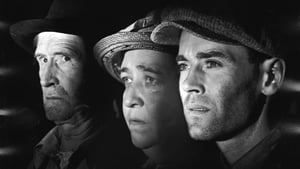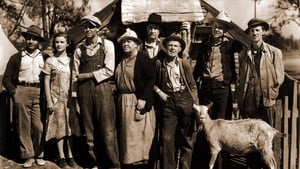Contact: [email protected]
Video Sources 0 Views

The Grapes of Wrath Colorized 1940: Best Timeless Classic in Vivid Color
Synopsis
[ez-toc]




Introduction
The magic of old movies lies in their ability to transport audiences to bygone eras, capturing moments in time with the grace of black and white cinematography. One such timeless masterpiece is “The Grapes of Wrath Colorized,” a poignant tale set against the backdrop of the Great Depression. In this article, we delve into the transformative impact of colorization on old films, focusing on the 1940 classic and its newly colorized version. We explore the narrative, the visual language, and the reviews surrounding this cinematic gem.
Read Media File Transfer Agreement: Terms and Conditions
Read FAQ
The Grapes of Wrath Colorized: A Journey Through Shades and Hues
Henry Fonda’s portrayal of Tom Joad and John Ford’s direction of “The Grapes of Wrath Colorized” have etched the Joad family’s struggle into the annals of cinema history. The film follows the Joads as they migrate from Dust Bowl-ridden Oklahoma to California in search of a better life. The decision to colorize this classic opens a new chapter, allowing audiences to experience the narrative in a fresh and vibrant light.
The original black and white cinematography, a hallmark of the era, added a raw and gritty atmosphere to the depiction of the Great Depression. The stark contrast between light and shadow, characteristic of black and white films, enhanced the emotional weight of the Joads’ journey. Colorization, however, introduces a nuanced layer to the storytelling, utilizing a palette that breathes life into the arduous trek.
The meticulous process of colorization involves a team of experts working to preserve the director’s original vision while infusing the film with vibrant hues. This delicate dance between maintaining authenticity and embracing modern aesthetics showcases the artistry involved in the restoration process.
Depicting Desolation: The Visual Language of Poverty in Black and White
California during the Great Depression was a land of stark contrasts — from lush landscapes to shanty towns. The absence of color in the original film accentuates the desolation faced by families like the Joads. The monochrome canvas becomes a powerful tool in conveying the harsh living conditions, making the audience feel the weight of economic hardship.
Black and white cinematography, with its stark imagery, captures the essence of human struggle against the backdrop of shanty towns. It transforms poverty into a palpable force, allowing viewers to connect with the characters on a visceral level. The Joads’ resilience is magnified against the backdrop of the desolate, monochromatic landscapes.
Reviving History: The Impact of Colorization on the Cinematic Experience
In reviewing the colorized version of “The Grapes of Wrath Colorized,” it’s essential to evaluate its effectiveness in engaging contemporary audiences. Colorization has often been met with skepticism, with purists arguing that it dilutes the director’s original vision. However, in the case of this classic, the infusion of color breathes new life into the narrative, making it accessible to a broader audience.
The colorized version of the film manages to debunk the myth that colorization undermines the director’s vision. Instead, it serves as a bridge between the past and the present, connecting generations through the visual allure of a technicolor landscape. By broadening accessibility, colorization allows new viewers to appreciate the nuances of classic films, sparking interest in a cinematic era that may have otherwise remained untouched.
Preserving the Past: Balancing Authenticity and Audience Appeal
Preserving the integrity of film preservation is a delicate dance. Film archives play a crucial role in safeguarding both the black and white and colorized prints of “The Grapes of Wrath Colorized” for future generations. This dual preservation ensures that the evolution of cinematic techniques is not only acknowledged but also celebrated.
The challenge lies in maintaining the delicate balance between preserving the original aesthetic and catering to the evolving tastes of modern audiences. The existence of both versions in archives safeguards the artistic choices of the past while embracing the possibilities of the future.
The Grapes of Wrath Colorized as a Timeless Social Commentary
As we revisit “The Grapes of Wrath Colorized” in its colorized glory, its enduring relevance becomes apparent. The film’s themes of economic hardship, resilience, and injustice resonate across time, drawing parallels to contemporary societal challenges. The echoes of the financial crisis and the indomitable spirit of the Joad family continue to hold a mirror to our world, making “The Grapes of Wrath” not just a relic of the past but a timeless social commentary.
Honoring a Masterpiece: The Enduring Legacy of “The Grapes of Wrath Colorized”
The impact of “The Grapes of Wrath Colorized” on cinema is immeasurable. John Ford’s masterpiece has influenced subsequent works, shaping the way filmmakers approach storytelling and social commentary. Its cultural significance extends beyond its release, cementing its status as a milestone in cinematic history.
From the Oscars it garnered to the discussions it sparked, “The Grapes of Wrath” stands tall as a testament to the power of storytelling. Its legacy is felt not only in the awards it received but in the countless filmmakers who found inspiration in its narrative and visual language.
Embracing Evolution: Appreciating “The Grapes of Wrath Colorized” in Colorized Form
For the modern audience, the colorized version of “The Grapes of Wrath Colorized” offers a unique lens through which to appreciate the film. The infusion of color allows viewers to discover new layers of visual storytelling while staying true to the narrative’s core message. It becomes a bridge that connects generations, allowing a contemporary audience to immerse themselves in the struggles and triumphs of the Joad family.
As we embrace the evolution of film restoration techniques, it’s crucial to acknowledge that colorization, when done with care and respect, can enhance the cinematic experience. “The Grapes of Wrath” in color is not a departure from the original; rather, it’s a celebration of the film’s enduring impact on cinema.
Conclusion
In conclusion, “The Grapes of Wrath Colorized 1940” stands as a testament to the delicate balance between preserving film history and embracing technological advancements in the world of restoration. This colorized version allows audiences to appreciate the film in a new light without diminishing the value of the original black and white masterpiece.
As we encourage readers to watch “The Grapes of Wrath” in its various versions, we extend an invitation to explore the different artistic choices and interpretations that contribute to its enduring status as a masterpiece. The legacy of classic movies is not static; it evolves with each generation, and colorization is a vibrant chapter in the ongoing narrative of cinematic history. Let us celebrate both the past and the present, ensuring that the magic of old films continues to captivate audiences for years to come.
















